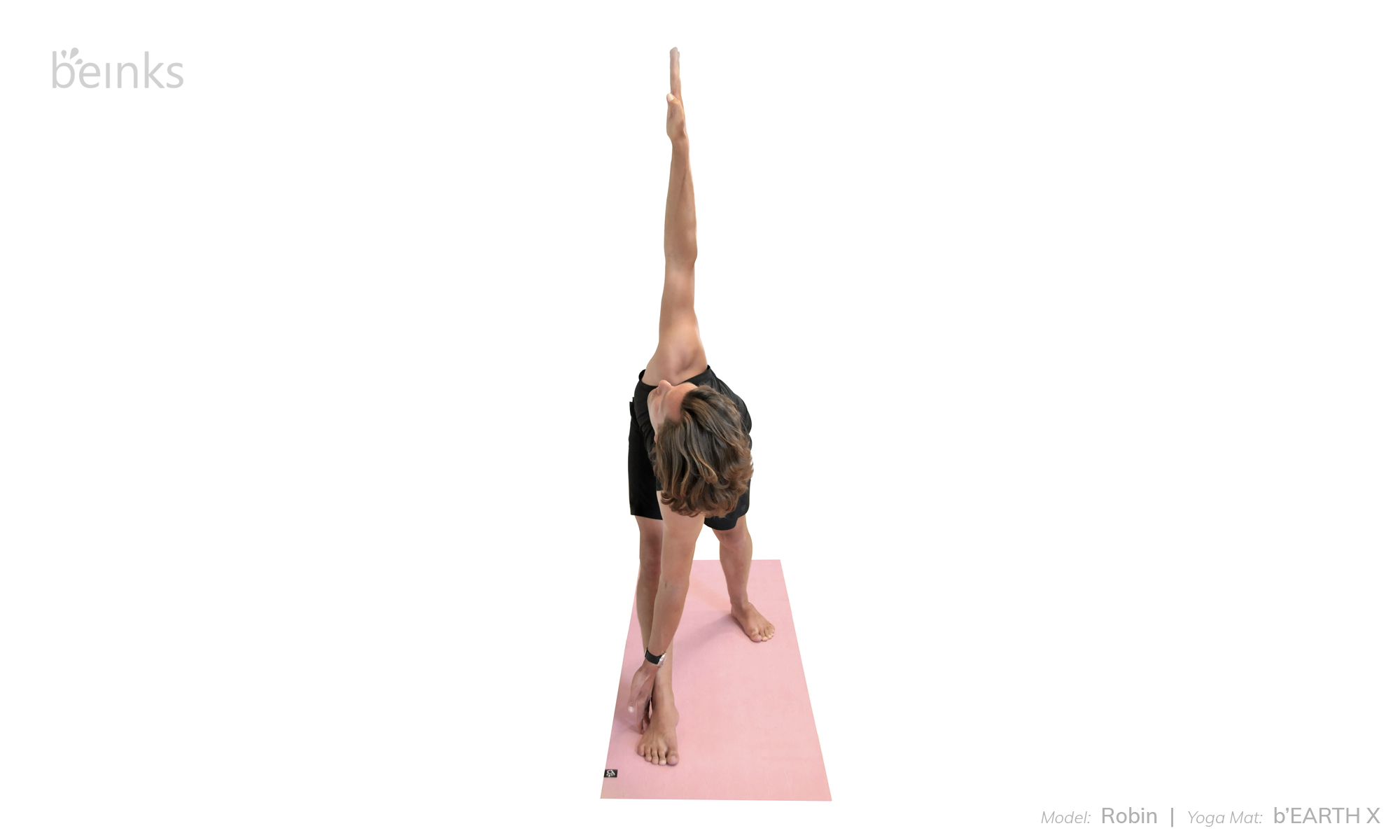Summary of Contents
About the pose
In Sanskrit, ‘parivrtta’ = ‘revolve’ , ‘trikona’ = ‘triangle’ and ‘asana’ = ‘posture’. In other words, referred to as Revolved Triangle Pose or even Twisted Triangle Pose. Parivrtta Trikonasana is a powerful standing intermediate level yoga pose which emphasises on balance along with deep twist to the spine. To master this yoga pose, importance should be given to alignment. It is also said that Parivrtta Trikonasana is the easiest standing twist yoga pose when compared to other standing twist poses. This pose has three components to it- side bend or stretch, twist and balance.
Revolved Triangle Pose is considered a base pose as revolved triangle pose variations can be derived from this pose. Revolved Triangle Pose helps boost energy in the body and hence can be included in flow yoga sequences.
Anatomy
Revolved Triangle Pose benefits the following muscles and hence can be included in yoga sequences with the corresponding muscle(s) focus:
- Arms and Shoulders
- Lower Back
- Middle Back
- Core (Abs)
- Hamstrings
- Chest
- Hips
- Neck
- Psoas
- Quadriceps
How to do the pose
- Start facing the long edge of the mat in a wide leg stance about a metre apart, heels in line with each other, toes pointing forwards.
- Turn your right foot 90 degrees to point towards the short end of the mat and your left foot in about 45 degrees. You are looking for a strong foundation.
- Turn your hips to face the short edge of the mat.
- Ground through your feet, engage your legs and pelvic floor muscles and draw your lower belly in and up.
- Lengthen the spine as you inhale and raise the left arm up.
- Exhale as you hinge from the hips to bring your upper body parallel with the floor – keep reaching the left arm forward, lengthening the spine and the back of the neck.
- Place your left hand on a block on the outside edge of your right foot.
- Bring your right hand onto your sacrum.
- Press firmly through both feet and move the right sitting bone backwards
- Keep lengthening the spine as you inhale
- As you exhale twist to the right, bringing your right shoulder over the left and raise the right arm.
- If you are feeling steady turn your head to look to the side, or up to your top hand.
- Stay for 5 breaths, keeping your legs strong, and your pelvic floor and lower abdominal muscles engaged.
- To come out of the pose, exhale as you lower your right arm and come out of the twist. Bring your hands back to your hips and come up to standing as you inhale.
- Pivot your feet and repeat on the other side.
Beginners tips
- This is a complex pose which challenges your balance and flexibility in the hamstrings, hips, spine, shoulders and neck.
- Break it down into two parts by first working on the position of the legs and back, before adding the twist when you feel ready:
- Start by practising Parsvottanasana. Place blocks on either side of your front foot for support.
- Add the twist only if you can do so without compromising the length in your spine.
Benefits
- Improves balance.
- Strengthens the legs, feet, ankles and abdominal muscles.
- Facilitates movement in the abdominal organs, helping digestion.
- Increases flexibility in the hamstrings, shoulders and upper back.
Watch out for
- If you have any neck pain, keep looking to the floor or the side instead of over your shoulder. Tuck the chin slightly in to keep the neck in line with the spine.
- This pose is not recommended if you have herniated or bulging discs in the spine or if you have problems with your sacroiliac joint.
FURTHER READINGS
- The complete yoga teachers’ guide – How to learn, earn & grow
- Free yoga resources – eBooks, music, asanas
- Yoga mat quiz – Which yoga mat is the best for me?
- Understanding about yoga
Variations
- In Ashtanga Vinyasa yoga this pose is taught flowing out of the second side of Utthita Trikonasana. The arms windmill around in one fluid motion as you pivot on the feet so that the left hand comes down to the floor as you twist and the right hand lifts to the ceiling.
- Once you are familiar with the basics of the pose you can use a wall as a prop to help refine it.
Credits
| Model | Robin (Yoga Peda) – An Ambassador of Beinks |
| Yoga Mat | b’EARTH & b’EARTH X by Beinks |
| Photographer | Sophie Dupont |
| Content | Tummee & Ekhart Yoga |




This was among the best posts and episode from your team it let me learn many new things.